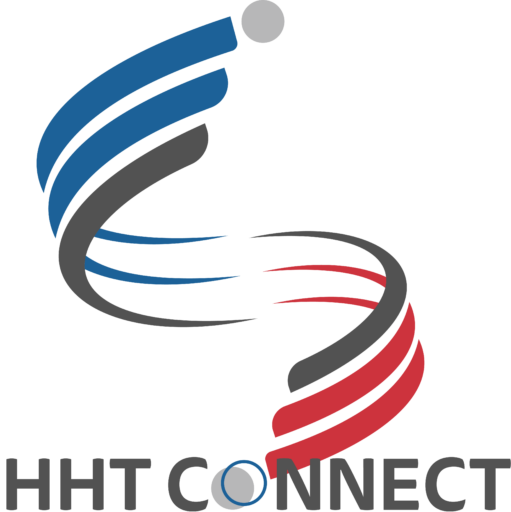Welcome!
HHT Connect is an online registry for people with HHT (Hereditary Hemorrhagic Telangiectasia). It is sponsored by Cure HHT and hosted by the National Organization for Rare Disorders (NORD®) on their IAMRARE® platform. This registry will collect information from participants who are affected by HHT (or their legally authorized representatives). The registry will also collect information on those who have passed, to be entered by a designated representative.
More information about the registry can be found on Cure HHT’s registry webpage at https://curehht.org/hht-connect-registry/.
What is the HHT Connect Patient Registry?
HHT Connect collects health information from as many HHT patients as possible so that researchers and doctors can discover patterns and clues that may help them better understand HHT and develop new treatments.
Individuals with HHT from around the world can participate by completing surveys online and entering their medical information. Participation in the registry is entirely voluntary.
We hope that the registry will capture the full global diversity of the HHT community and will provide insights about HHT that will lead to new discoveries and better care for HHT patients.
Every HHT patient who registers helps us gain more accurate information about HHT. Other people living with HHT now, and in the future, will benefit from your contribution. You can make a positive difference by participating NOW in the HHT Connect registry.
Who can participate in HHT Connect?
This registry study is open to anyone who has an HHT diagnosis and meets the study inclusion criteria for participation.
This includes:
- Adults who enter information for themselves
- Adults who can’t enter information by themselves and who have a Legally Authorized Representative who can enter data on their behalf
- Children or minors who have a parent or guardian who can enter data on their behalf
- Deceased persons who have a Designated Representative who can enter retrospective data on their behalf
A Participant Account can be created by an adult with HHT, and the adult will answer questions about themself.
A Caregiver Account can be created by (1) the parent/guardian of a child with HHT, (2) a legally authorized caregiver of an adult with HHT, or (3) a designated representative of a person with HHT who has passed away. The account holder will answer questions for the Participant (the child/adult with HHT).
What are the steps to joining HHT Connect?
Adult patients with HHT (or their caregivers) and parents/guardians of children with HHT can join by clicking the Register link. The next steps include:
- Create your password-protected account.
- Gather your (or your child’s) health records, test results, and family history.
- Complete the consent form that will further explain the study.
- Answer the surveys online for yourself as the HHT patient or on behalf of a child/adult with HHT.
- We estimate that it will take between 30 – 45 minutes to complete the initial surveys. Some surveys are short and will take only a couple of minutes. Others are longer, and the length will depend on the extent of your HHT medical history.
- You do not need to complete all of the surveys at once. We encourage you to complete what you can, take a break, and return to the surveys at your convenience.
What types of data will be collected in HHT Connect?
HHT Connect collects data on the following topics:
- Socio-demographics
- Medical history and diagnosis
- Treatment and disease progression
- Management of care
- Quality of life
Is the data secure?
HHT Connect follows strict government guidelines to assure patient information is protected. The platform is served over HTTPS, which means that the data is encrypted when being sent from the user’s browser to the NORD servers. The data is also kept encrypted in the NORD database. Communications between the registry platform application server and the database are also encrypted. As with any information one provides electronically, there is a very rare chance that privacy could be compromised. However, the registry and the security measures minimize the chance of this occurring.
Video links:
